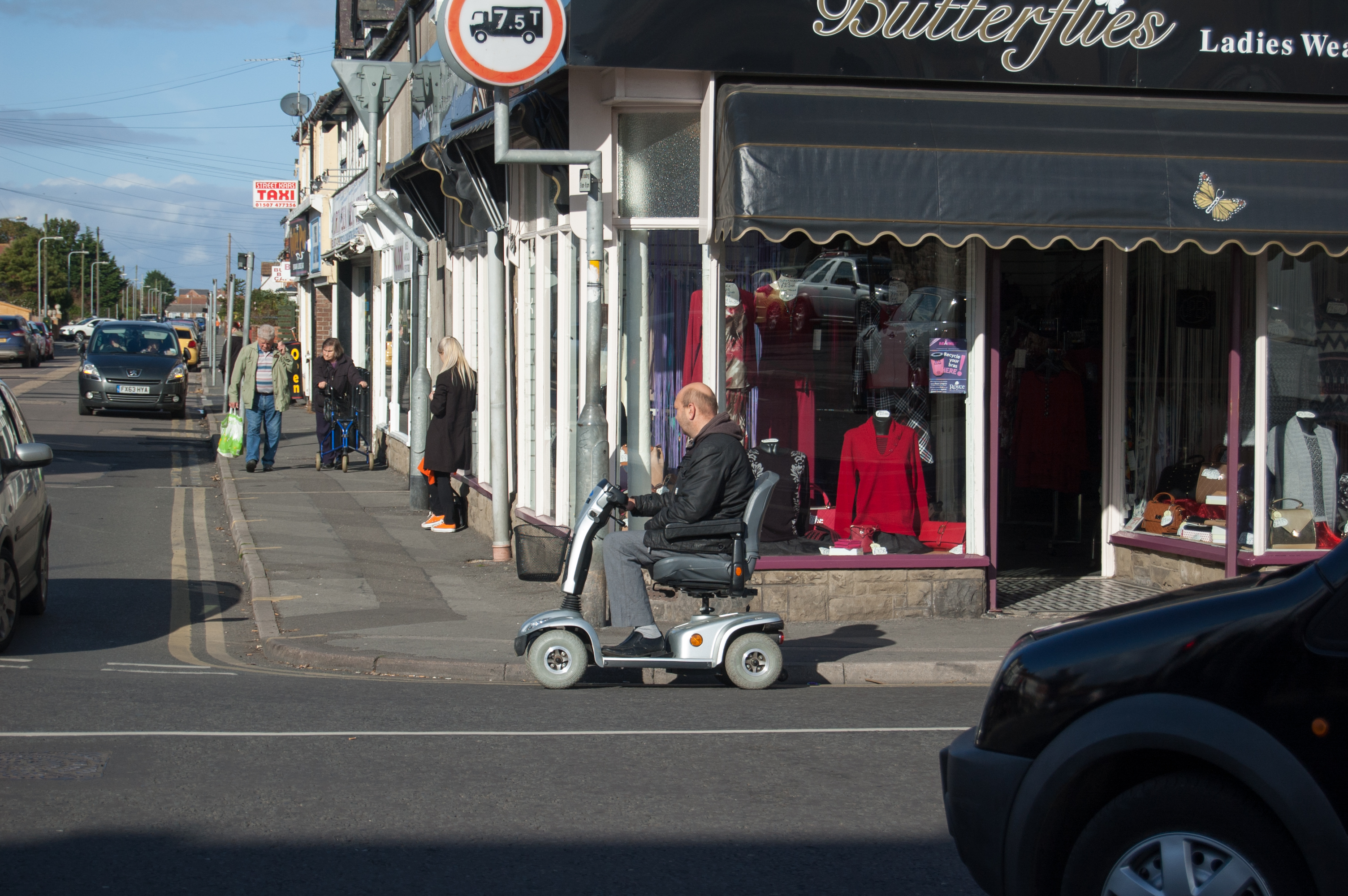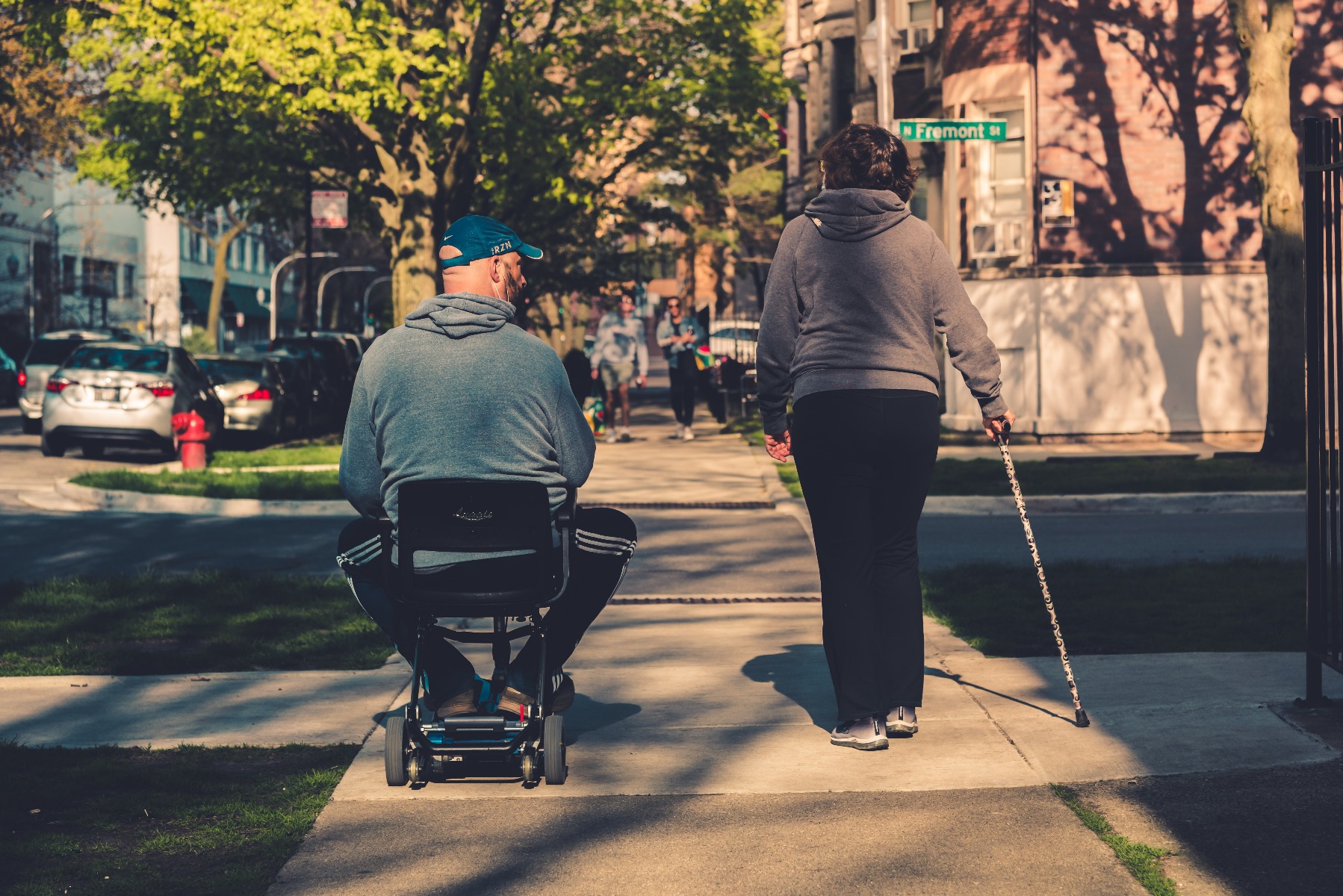The Mobility Scooter Highway Code

We all know the highway code for cars, but how many of us know the mobility scooter highway code?
The mobility scooter highway code is an essential piece of knowledge that all mobility scooter users should know, but it is helpful for every other road user to know too.
Just like cars, mobility scooters can cause big accidents if the user collides with another vehicle or a member of the public. With this in mind, it’s vital that the everyone, especially mobility scooter users, know the mobility scooter highway code.
Below is everything you need to know about mobility scooters and the highway code, including the types of mobility scooters allowed and not allowed on the road, and important advice for users heading outside on their scooter:
What types of mobility scooters are allowed on the road?
There is only one type of mobility scooter allowed on the road, and this is called a road scooter. These types of scooters are made with the intention of the users venturing out further afield, such as using the scooter as more of a vehicle and using it to get into work. These scooters are much larger than the average scooter but can still be used on pavements if the speed is adjusted accordingly.
What makes this type of scooter appropriate for road use is it hard wearing tyres and substantial body, which ensures more safety to the users and it is more durable against harsh weather conditions. They also go up to a speed of 8 miles an hour, which is safer speed if being used on the road as users can react to danger quicker.
The three mobility scooters not allowed on the road are: manual wheelchairs, powered wheelchairs and boot or pavement scooters.

Basic mobility scooter advice:
Get the right mobility scooter for you: The most important factor to consider before buying a mobility scooter is which one will truly be the best for you. If you are unsure on which scooter would work for you, then contacting a mobility scooter dealer like Fenetic Wellbeing would be a good idea. Fenetic offer free advice from professional experts to ensure the mobility scooter you choose is completely inline with your needs and requirements.
Get to know your scooter: Before heading outside on your scooter its extremely important that you know the ins and outs of how your scooter works. When you decide on which scooter is best for you, ask the mobility scooter experts to give you a run through of how to work the scooter. It could also be a good idea to invite a friend or family member around to watch you have a few practices outside your home before venturing out into the big wide world.
Get the right insurance for you: By law you do not have to be insured on a mobility scooter, however, it is strongly recommended that users at least get third-party cover.
Go on a training course: If it is your first time using a mobility scooter, or you are not confident using the scooter you have chosen to purchase, then going on a mobility scooter road safety awareness course will give you self-assurance in your abilities to use the scooter correctly. It will also reassure your family and friends that you are equipped with all the knowledge and skills you need to take on the roads and pavements whilst out and about.
Be safe and sensible: Like any other vehicle you can not drink and drive or use drugs and drive whilst using your scooter. If you are on medication always check with your doctor if you can continue using driving. Some medication can cause drowsiness or sickness, if this is the case then DO NOT head out on your scooter.
Stay bright and alert: Always make sure other people can see you. This includes ensuring the lights on your vehicle are on when dark or when the weather is dull, and ensuring you have fluorescent markings on your scooter or on your clothing. It is also extremely important that nothing is restricting your view whilst driving, for example, if it is cold and you are wearing a hat, make sure it sits away from the eye area.

On the road
To use a mobility scooter on the road the scooter must meet certain requirements which have been defined by the Driver and Vehicle Licensing Agency (DVLA). These requirements include:
- Have a maximum speed of 8 miles per hour for on road use and can easily reduce speed to 4 miles per hour off the road.
- The capability of carrying weight up to 150kg.
- A width that does not exceed 0.85 metres.
- A quick reacting braking system.
- A clear and loud horn.
- Front and rear lights.
- A rear view mirror.
- An amber flashing light.
- The scooter must be registered with the DVLA and a tax disc needs to be displayed.
The rules of the road for mobility scooter users:
- Always follow and react to traffic light signals, including stop signs and give way signs.
- You can not use bus lanes or cycle tracks.
- Scooters are prohibited on motorways.
- Always use your indicators to pull out or turn.
- Use head lights and rear lights and night.
- Always keep in mind that other vehicles will be moving faster than you, so ensure you leave plenty of time to carry out actions.
- Look out for parked cars that are opening their doors.
Although road scooters provide the options of driving on the roads, it is recommended that users should use pavements if possible.
On the pavement
Some scooters are designed specifically for pavement use only.
The rules of the pavement for mobility scooter users:
- Never exceed 4 miles per hour.
- Pedestrians always have right of way.
- Avoid busy pavements if possible, for example, shopping highstreets.

Important things to remember when out and about on your scooter:
- Always plan your journey before heading out. It is a possibility that you could come in to contact with many obstacles on your journey, such as steep hills, high kerbs, rough and uneven ground, and overly busy streets. This is not only a nuisance to you, but it could run down the battery life of your scooter.
- Always ensure your scooter battery is fully charged.
- Do not carry anyone else on board (not even your pet!).
- Do not overload your scooter with shopping, luggage or heavy items.
- Always keep an eye out for pedestrians. Even if you use a mobility scooter on the pavements, pedestrians always have right of way.
- Do not wear lose fitting clothes, if you do there is every chance this could get caught in the wheels of scooter.
- Do not park anywhere that could cause obstruction to other vehicles or pedestrians.
- Reduce speed if you are in a busy area or on uneven ground.
So, there you have it, the mobility scooter highway code! The most important thing to take away from this is that a mobility scooter is no different from a car when it comes safety concerns, and when using a scooter on the road you need to obey all traffic signals.


